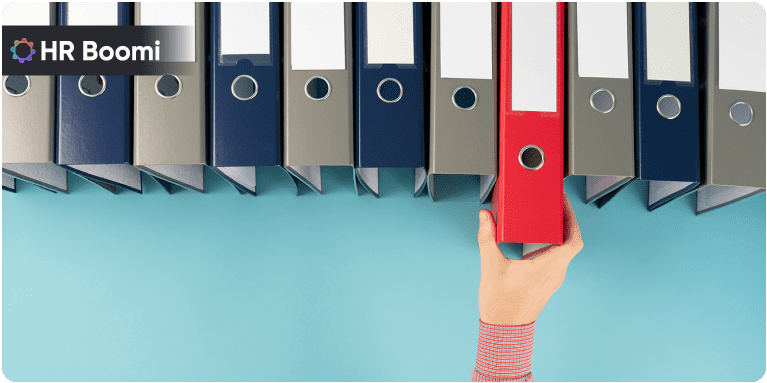
Table of Contents
In an ultra-modern, swiftly evolving virtual panorama, the role of file control in groups has in no way been more crucial. Gone are the days when businesses relied entirely on bodily paperwork; the digital transformation has ushered in a generation wherein files arrive in diverse virtual codecs, necessitating a robust record control gadget. In this comprehensive guide, we can discover the significance of document management, its key components, and the blessings of implementing a file control system (DMS) in your employer.
The Importance of Document Management
Evolution of Document Management
Traditionally, corporations controlled archives in the main paper structure. But with the advent of digital technology, general public documentation is now generated and obtained electronically. This shift has created a need for efficient record control answers to deal with the influx of digital documents and streamline record-related processes.
Definition of Document Management
Record management encompasses a set of policies and practices used to control files of every type within a corporation. It includes capturing, storing, retrieving, extracting data, purging unnecessary archives, maintaining essential documents, and securely putting off obsolete ones. A DMS (Document Management System) is a software program solution that helps these approaches by organizing, securing, digitizing, labeling, approving, and completing obligations associated with virtual documents.
Key Components of Document Management
Effective record control systems incorporate several essential additives to ensure easy operations inside an enterprise:
Check-In/Check-Out and Version Control
These functions save you conflicts while multiple users need to edit the same record simultaneously. Version management tracks adjustments and maintains a history of report revisions, permitting users to revert to preceding variations if wished.
Roll-Back
This feature permits users to revert to an advanced version of a record in case of errors or unintended changes.
Audit Logs
Document management structures maintain specific logs that tune all moves taken on a document, offering transparency and duty.
Comments and Annotations
Users can upload feedback and annotations to files, facilitating group collaboration and conversation.
Integration with Enterprise Content Management
Report management is a critical element within the broader framework of employer content control (ECM). ECM structures embody numerous gear and techniques for taking pictures, storing, coping with, and turning in content across a company. File management seamlessly integrates with ECM, improving its competencies for handling files efficiently.
Advantages of Document Management Systems
Enforcing a report control system offers several blessings for agencies, irrespective of their size or enterprise:
Centralized Document Repository
A DMS is a central repository for all critical documents inside an organization. It eliminates the need to search via bodily folders and submit cabinets, making it easy to access, view, adjust, and share statistics efficiently.
Enhanced Document Security
Shielding private facts is paramount. Document management systems enforce rigorous safety features, such as position-primarily based entry to control, to ensure that only legal customers can access precise files and documents. This safeguarding of imperative facts prevents information breaches and unauthorized get entry.
Anytime, Anywhere Access
In an ultra-modern, speedy-paced business environment, regions must not prevent entry to quintessential documents. Cloud-based total report management systems permit users to access records from any tool with a web connection. This functionality fosters faraway paintings and collaboration and guarantees facts availability even during natural failures.
Improved Organization
Report control systems use tags, classes, and metadata to categorize and prepare documents effectively. Through keyword-based searches, customers can retrieve files within seconds, removing the time wasted on guide searching.
Time and Cost Efficiency
Efficient file control translates into time deposits for personnel, leading to cost savings for the business enterprise. By automating document-associated tasks, organizations reduce operational fees and boost universal productivity.
Collaborative File Sharing
DMS allows specific users to collaborate on files and files seamlessly, even while maintaining control over who can access and adjust the information. Audit path functionality provides a clean record of record activities, minimizing process errors and inefficiencies.
Advantages of Cloud-Based Document Management
Cloud-based totally file management systems offer additional benefits:
Minimal IT Infrastructure Requirements
Cloud-hosted DMS solutions do not require extensive IT infrastructure or an in-house IT group to put in and hold the device. This reduces the weight on internal sources.
Cost-Efficiency
Cloud-based DMS commonly entails a monthly subscription rate in keeping with consumers, imparting a price-effective approach with decreased preliminary investment compared to on-premises solutions.
Accessibility and Mobility
Cloud-based DMS gives each time, anywhere entry, permitting customers to retrieve and manipulate archives from diverse devices, improving flexibility and far-off work competencies.
Automatic Cloud Backups
Statistics stored in the cloud are mechanically backed up, decreasing the risk of data loss because of hardware disasters or disasters.
Scalability
Cloud-based total structures offer scalability, enabling groups to amplify or contract their report control answer as their needs change or grow.
Enhanced Security
Reliable cloud providers often provide sturdy security measures, which include encryption and information redundancy, surpassing the security abilities of on-premises solutions.
Conclusion
In the modern digital age, record control is indispensable to organizational performance, safety, and productivity. The transition from paper-based documentation to digital codecs has made it vital for corporations to put in force robust file control systems. These systems now streamline record-related techniques and beautify statistics security, accessibility, and collaboration.
Cloud-primarily based record control answers offer businesses a powerful and flexible value thanks to controlling their archives effectively while taking advantage of the security and accessibility advantages of the cloud. Embracing report management systems, whether or not on-premises or within the cloud, is an imperative step for agencies looking to stay aggressive and agile inside the modern-day commercial enterprise landscape.
Recent Posts
-

In-house vs. Outsourced Payroll: Pros and Cons
-

Mastering Talent Retention: A Corporate Challenge
-

What is employer branding and how to apply it in your company?
-

The Significance of Employee Communication Within
-

What is time management and why is it important?
-

Net salary: what is it and how is it calculated?
-

Enhancing Employee Experience: Strategies for Excellence
-

10 Best Gifts to Boost Sales Channels
